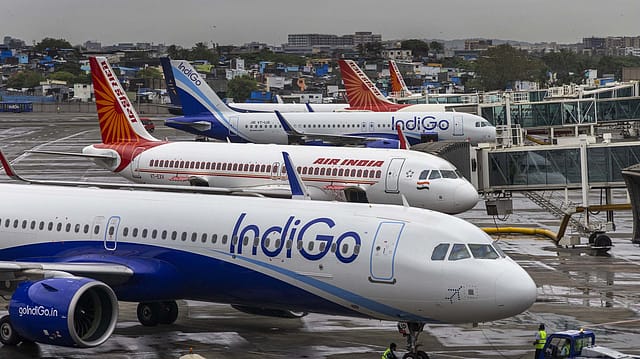Air passenger traffic down 10% over pre-Covid levels in Sept
ADVERTISEMENT

Showing a steady recovery amid the waning Covid cases and opening of the economy, the domestic passenger traffic for September 2022 is estimated at 103 lakh, 2% higher than 101 lakh in August 2022 and 46% higher than September 2021. It fell short by 10% as compared to pre-Covid levels i.e. September 2019. Though international passenger traffic for Indian carriers surpassed pre-Covid levels by 34%, ratings agency ICRA says in its latest report.
For H1 FY2023 (April-September 2022), too, the domestic passenger traffic declined by 11% as compared to April-September 2019 (pre-covid levels) at 627 lakh. However, the overall H1 FY23 growth was 111% on a year-on-year basis.
Maintaining the ‘negative’ outlook on the Indian aviation industry, ICRA says the financial performance of Indian airlines is likely to remain under pressure in the near-term. However, the domestic passenger traffic recovery remains healthy.
International passenger traffic remains a shining spot. It continues to rise since the resumption of the scheduled international operations from March 27, 2022. In September 2022, the international passenger traffic for Indian carriers stood at 25.12 lakh, surpassing pre-Covid levels of 18.8 lakh by 34%.
January 2026
Netflix, which has been in India for a decade, has successfully struck a balance between high-class premium content and pricing that attracts a range of customers. Find out how the U.S. streaming giant evolved in India, plus an exclusive interview with CEO Ted Sarandos. Also read about the Best Investments for 2026, and how rising growth and easing inflation will come in handy for finance minister Nirmala Sitharaman as she prepares Budget 2026.
"Elevated ATF prices will continue to pose a major threat to earnings and the liquidity profile of the airlines in the near to medium term. Also, the depreciation of the INR against the US$ (which adversely impacts lease rentals, maintenance cost and other overheads) will have a major bearing on the airlines’ cost structure," says the report.
The ratings agency says the rising prices of aviation turbine fuel (ATF) and the general inflationary environment are stifling the industry earnings of airlines. Notably, ATF prices in October 2022 were higher by 60% on a YoY basis but down by 4.5% sequentially.
ICRA says while airlines have been increasing yields, they are not adequate to offset the impact of the rising ATF prices.
Likely near-term relaunch of Jet Airways and the entry of low-cost domestic carrier, Akasa Air, will also intensify competition in the domestic aviation industry, says the report, adding that this'll limit airlines' ability to expand margins.
For FY2023, ICRA expects a fast-paced recovery in domestic passenger traffic, aided by normalcy in operations and widening vaccination coverage. Overall, the domestic aviation industry may incur a net loss of ₹15,000-17,000 crore on elevated costs of fuel. Also, the debt levels (including lease liabilities) are expected to be ₹1,00,000 crore in FY2023.
On airfares, ICRA says fares will harden on strong cost headwinds, though there's limited scope for sharp fare hikes due to intense competition and airlines' efforts to maintain or expand market share.
Some domestic airlines are facing financial distress, stretched liquidity issues, finds the ICRA report. "While some airlines have adequate liquidity and/or financial support from a strong parent...for others, the credit metrics and liquidity profile have been under significant stress over the past few years," says the report.
ICRA says to ease liquidity pressures, airlines are resorting to cost rationalisation measures like salary cuts, leave-without-pay, and laying off of pilots and crew members. Some have also sought a deferment in lease rental payments to improve liquidity.
